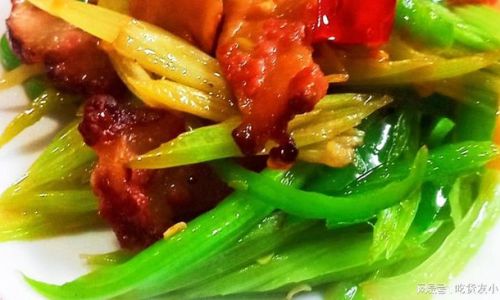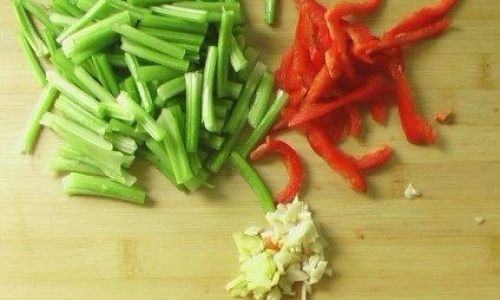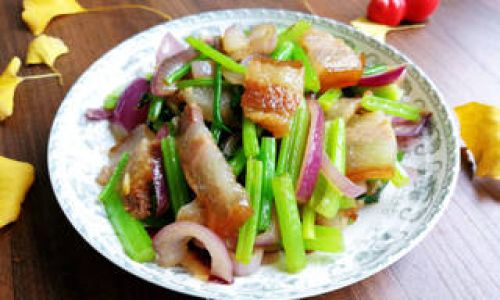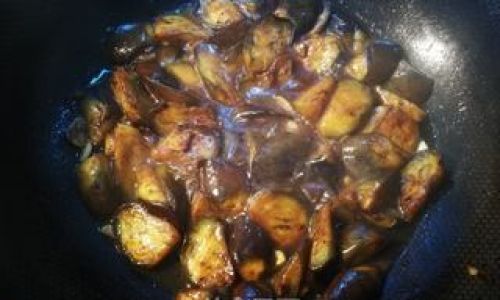Introduction
In the realm of Chinese cuisine, stir-fries are a cornerstone of everyday meals, offering a quick, flavorful, and nutritious way to enjoy a variety of ingredients. Among the myriad of stir-fry combinations, celery and preserved pork (often referred to as “lap cheong” in Cantonese or “xian rou” in Mandarin) stands out as a classic dish that combines the crisp freshness of celery with the savory, smoky taste of preserved meat. This dish is not only a delight to the taste buds but also a testament to the art of balancing flavors in Chinese cooking.

In this guide, we’ll walk you through the step-by-step process of making homemade celery and preserved pork stir-fry. From selecting the right ingredients to mastering the cooking technique, we’ll cover every detail to ensure your dish is as authentic and delicious as it can be.
Ingredients
Before diving into the cooking process, let’s list down the essential ingredients you’ll need:
- Celery: Choose fresh, crisp celery stalks with vibrant green leaves (if using). Avoid stalks that are wilted or have yellowing leaves.
- Preserved Pork (Lap Cheong/Xian Rou): This is a type of dried and salted pork, often flavored with soy sauce, sugar, and spices. It adds a unique umami flavor to the dish.
- Garlic: Fresh garlic cloves, minced, for a pungent aroma and flavor.
- Ginger: A small piece of fresh ginger, sliced thinly or minced, to balance the dish with a subtle sweetness and heat.
- Oyster Sauce: A thick, savory sauce made from oysters, used to enrich the flavor of the stir-fry.
- Soy Sauce: Light soy sauce for seasoning, and optionally, some dark soy sauce for color.
- Shaoxing Wine (or any Chinese cooking wine): Adds depth and complexity to the dish.
- Sugar: A pinch to balance the savory and sweet flavors.
- Vegetable Oil: For stir-frying.
- Red Chili Peppers (optional): For a bit of heat.
- Salt: To taste, though remember that preserved pork is already salty.
- Cornstarch (optional): For thickening the sauce if desired.
- Water or Chicken Stock: A small amount, if needed, to adjust the consistency of the stir-fry.
Preparation
-
Prepare the Celery:

- Wash the celery stalks thoroughly under running water.
- Cut off the bottom ends and any stringy fibers.
- Slice the stalks into diagonal pieces about 1-2 inches long. If using the leaves, chop them finely and set aside separately.
-
Prepare the Preserved Pork:
- Rinse the preserved pork under cold water to remove excess salt and any surface impurities.
- Soak it in water for about 30 minutes to an hour to soften it slightly. This step is optional but can help if the preserved pork is particularly hard.
- Drain and slice the pork into thin strips or small cubes.
-
Prepare the Aromatics:
- Peel and mince the garlic.
- Peel and slice or mince the ginger.
- If using red chili peppers, slice them thinly.
Cooking Instructions
-
Heat the Pan:
- Place a wok or large frying pan over medium-high heat.
- Add a tablespoon or two of vegetable oil and let it heat up until it’s shimmering but not smoking.
-
Cook the Aromatics:

- Add the minced garlic and ginger to the hot oil. Stir-fry for about 30 seconds to 1 minute until fragrant but not burnt.
- If using red chili peppers, add them in now and stir-fry for another 30 seconds.
-
Stir-Fry the Preserved Pork:
- Add the sliced preserved pork to the pan, spreading it out in a single layer.
- Stir-fry for about 2-3 minutes until the pork starts to turn golden brown and releases its oils. This step helps to render some of the fat and deepen the flavor.
-
Add Seasonings:
- Pour in a splash of Shaoxing wine (about 1-2 tablespoons), stirring quickly to deglaze the pan and incorporate the wine’s flavors.
- Add 1-2 tablespoons of oyster sauce, 1 tablespoon of light soy sauce, and a pinch of sugar. Stir well to combine.
- Optionally, add a small amount of dark soy sauce for color.
-
Stir-Fry the Celery:
- Add the sliced celery to the pan, spreading it out evenly.
- Stir-fry for about 3-5 minutes, until the celery turns bright green and becomes tender-crisp. Remember to stir frequently to prevent burning.
-
Adjust Seasoning and Thicken Sauce (Optional):
- Taste the stir-fry and adjust the seasoning with more soy sauce or sugar if needed.
- If you prefer a thicker sauce, mix a small amount of cornstarch with water to form a slurry and add it to the pan, stirring quickly to combine.
-
Finish with Aromatics (Optional):

For an extra layer of flavor, you can sprinkle in some finely chopped celery leaves or fresh green onions at the end of cooking.
-
Serve:
- Transfer the celery and preserved pork stir-fry to a serving dish.
- Garnish with additional sliced red chili peppers or chopped green onions if desired.
Serving Suggestions
This dish pairs wonderfully with a variety of sides. Here are a few suggestions:
- Steamed Rice: The classic accompaniment to stir-fries, absorbing the savory juices.
- Jasmine Rice or Coconut Rice: For a tropical twist.
- Noodles: Stir-fries can also be served over noodles, such as udon, soba, or even fried rice noodles.
- Vegetable Side Dishes: Simple steamed or stir-fried vegetables like broccoli, bell peppers, or snap peas provide a colorful and nutritious contrast.
- Soup: A light and refreshing soup, such as egg drop soup or miso soup, can balance out the rich flavors of the stir-fry.
Storage and Reheating

- Storage: Leftovers can be stored in an airtight container in the refrigerator for up to 3 days.
- Reheating: To reheat, place the stir-fry in a microwave-safe dish and cover with a lid or plastic wrap (vented). Heat on medium power until warm, stirring occasionally to prevent overcooking. Alternatively, you can reheat it on the stovetop over medium heat, stirring frequently.
Conclusion
Making homemade celery and preserved pork stir-fry is a rewarding culinary experience that combines the simplicity of stir-frying with the complexity of Chinese flavor profiles. By following the steps outlined in this guide, you’ll be able to create a dish that balances the crispness of celery with the rich, smoky taste of preserved pork, all while enjoying the aromatic notes of garlic, ginger, and Shaoxing wine. Whether you’re serving it as a main course or a side dish, this stir-fry is sure to impress with its depth of flavor and satisfying texture. So, gather your ingredients, heat up your wok, and embark on a culinary journey that takes you straight to the heart of Chinese home cooking. Buon appetito!






0 comments